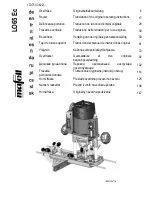
31-3
Catalyst 2928 Switch Software Configuration Guide
OL-23389-01
Chapter 31 Configuring QoS
Understanding QoS
Basic QoS Model
To implement QoS, the switch must distinguish packets or flow from one another (classify), assign a
label to indicate the given quality of service as the packets move through the switch, make the packets
comply with the configured resource usage limits (police and mark), and provide different treatment
(queue and schedule) in all situations where resource contention exists. The switch also needs to ensure
that traffic sent from it meets a specific traffic profile (shape).
shows the basic QoS model. Actions at the ingress port include classifying traffic and
queueing:
•
Classifying a distinct path for a packet by associating it with a QoS label. The switch maps the CoS
in the packet to a QoS label to distinguish one kind of traffic from another. The QoS label that is
generated identifies all future QoS actions to be performed on this packet. For more information, see
the
“Classification” section on page 31-3
.
•
Queueing evaluates the QoS label and the corresponding CoS value to select into which of the two
ingress queues to place a packet. Queueing is enhanced with the weighted tail-drop (WTD)
algorithm, a congestion-avoidance mechanism. If the threshold is exceeded, the packet is dropped.
For more information, see the
“Queueing Overview” section on page 31-4
.
The action at the egress port is queueing:
Queueing evaluates the QoS packet label and the corresponding CoS value before selecting which
of the four egress queues to use. Because congestion can occur when multiple ingress ports
simultaneously send data to an egress port, WTD differentiates traffic classes and subjects the
packets to different thresholds based on the QoS label. If the threshold is exceeded, the packet is
dropped. For more information, see the
“Queueing Overview” section on page 31-4
Figure 31-2
Basic QoS Model
Classification
Classification is the process of distinguishing one kind of traffic from another by examining the fields
in the packet. Classification is enabled only if QoS is globally enabled on the switch. By default, QoS is
globally disabled, so no classification occurs.
During classification, the switch performs a lookup and assigns a QoS label to the packet. The QoS label
identifies all QoS actions to be performed on the packet and from which queue the packet is sent.
201792
















































